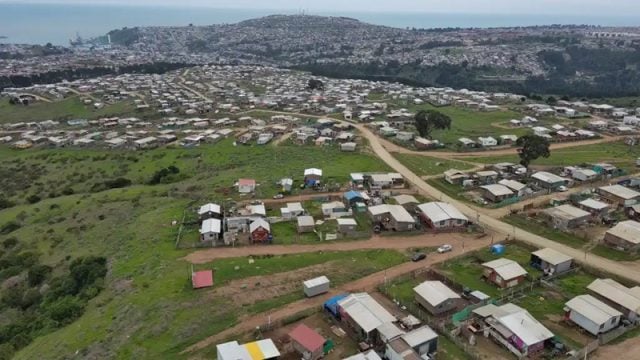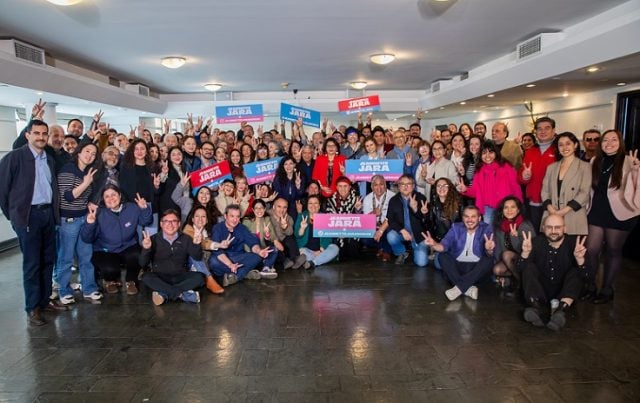By Esteban Serey, attorney and holder of a master’s degree in Urban Development.-
As nationwide TV broadcasts highlight evictions from informal settlements, from morning shows to prime-time newscasts, what stands out is the lack of reflection among those of us with a stake in Chile’s housing crisis.
We are quick to diagnose, to criminalize or even romanticize these camps, yet persistently unable to offer solutions that both uphold property rules and resolve the human conflicts behind land occupations across Chile.
At the heart of the matter lies a tension the State has not clearly addressed: on one hand, the goal of delivering title-bearing homes to settlement residents under existing housing programs; on the other, the push to eradicate entrenched encampments within the urban fabric.
Though these aims appear complementary, they often collide in practice under the rules and procedures of the Fondo Solidario de Elección de Vivienda (FSEV), the main instrument used to tackle this challenge.
The Demand-Side Subsidy Formula: Is This the Right Path?
In Chile, housing subsidies are awarded through resolutions issued by the Ministry of Housing and Urban Development (MINVU) following regional competitions.
The legal framework for those resolutions is established by Supreme Decrees governing the housing programs, which broadly define minimum requirements and administrative procedures.
These decrees, in turn, are grounded in Law 16.391, which empowers MINVU to issue ordinances, regulations and general instructions, and to prepare urban and rural housing plans.
Finally, programs award subsidies according to the resources authorized each year in the national budget law.
For many years, D.S. No. 49 of 2011 has been the vehicle enabling the poorest families to access ownership, creating the Fondo Solidario de Elección de Vivienda (FSEV).
This program is arguably one of Chile’s most innovative housing-policy designs. With varying degrees of success, it has addressed a wide range of needs by granting subsidies for (1) purchasing completed homes, new or used; (2) building on a family’s own lot, adding density where space allows; (3) developing new housing complexes for community committees; and (4) constructing small condominiums of 2 to 9 homes on a single parcel.
In practice, the subsidy operates like a voucher: the State recognizes a monetary commitment owed to the awarded household, payable when that household accesses a home under one of the modalities above. This promise of payment is an awarded subsidy and is booked against the current-year budget in the year it is awarded. The actual expenditure (the disbursement of funds) occurs in the year the home purchase or construction is finalized, typically around three years after award.
As a result, the Fondo Solidario runs on relatively long timelines: subsidy awards happen early in the process, while households cash the voucher only upon purchasing or taking possession of the home at the end.
For informal settlements, the prevailing modality has been to build new housing complexes to relocate residents. People apply on the basis of their campamento status; if they meet the requirements, they are awarded the subsidy and cash it three or more years later when they move into their permanent homes. In practice, the lag between award and payout is typically three to five years.
Because the State seeks to serve people in extreme need while also eliminating camps (whether due to risk zones, legal noncompliance or private property conflicts), the subsidy rules add a condition: upon receiving the keys, beneficiaries must disassemble their shacks, rooms or makeshift homes and immediately vacate the plot they had occupied in the camp.
Anyone who has worked with families in these settlements knows that their only constant is change. The circumstances that justified a subsidy award often shift over the three to five years the relocation process takes. Under this setup, the rule effectively pressures beneficiaries to remain in precarious housing until the move; otherwise, after three to five years they will have nothing left to dismantle and no plot to vacate.
This mismatch exposes how hard it is to apply the demand-side subsidy system to campamentos. And that is only among families that, at some point, meet the program’s requirements. A large share of households — because of migration status, inability to save, or single-parent composition — will never receive a subsidy award.
That reality has fueled recent protests by evicted families in La Florida, Colina, Quilpué and beyond. Only a small fraction of residents have ever been awarded a subsidy; the rest are left to fend for themselves. And an even smaller subset will actually receive the payout, and only if at the time of eviction they are still on the camp’s official registry and have a defined plot to vacate.
The Housing System’s Rigidity in Meeting Demand from Informal Settlements
A 2009 Constitutional Court ruling defined a subsidy as ‘a direct economic benefit … whereby resources are transferred to the beneficiary to finance an activity deemed in the public interest’ (Case No. 1295, October 6, 2009).
That definition fits subsidies used for the individual purchase of a new or used home; it does not align with subsidies that fund construction of new complexes. In the latter, funds do not go to beneficiaries but to intermediaries — sponsoring entities, builders and technical inspectors — either as advances against the subsidy or as the final subsidy payment upon project completion.
If the goal is an agile formula that relocates families from camps into privately owned homes, housing policy should make the State contribution explicit as direct financing to real-estate management and construction — in other words, to the supply side — decoupling families in precarious settlements from the fate of the project where they will eventually be relocated, or even regularized in place.
This does not undermine community-building, neighborhood work or participation among beneficiaries, nor minimum eligibility checks at the time of relocation. It would, however, allow the State to deploy housing supply directly when camps are dismantled, aligning today’s competing objectives: ending camps by actually solving those families’ housing needs.
Yet this raises another question: is the Fondo Solidario the right program to meet the housing demand of families living in camps?
Beyond the obsolescence of a demand-side model, there is a rigid system ill-suited to a multifactor problem. Camps are not just about access to housing; they reflect deeper socioeconomic segregation that has, quite literally, pushed families out of formal housing in the city.
Addressing this requires State policies and programs capable of tackling multiple factors through integrated solutions that combine formal employment, housing, access to education and even child nutrition.
The Fondo Solidario, by design, focuses on regulating the construction of a new complex to which camp families are relocated. It must therefore be complemented by additional programs — from rent subsidies to temporary shelters — and only for households that meet the regulatory criteria. Each of these has its own individual process and timelines, making it difficult to apply them to an entire camp as a unit.
Given this, Chile needs new regulatory tools to address camps through interministerial coordination: promoting access to formal jobs, resolving the housing need at least temporarily (for example, through publicly owned transitional neighborhoods), and boosting school attendance for children.
In that sense, the integration and participation actions required by the Fondo Solidario fall far short of what today’s numerous camps around the country actually need.
It is urgent to design a new program from the housing side, eliminating the demand-side subsidy formula for camp families and — more importantly — coordinating efforts through a policy that addresses, in an integrated way, the economic, social and cultural complexity of precarious settlements nationwide.
Esteban Serey, attorney and holder of a master’s degree in Urban Development.-











